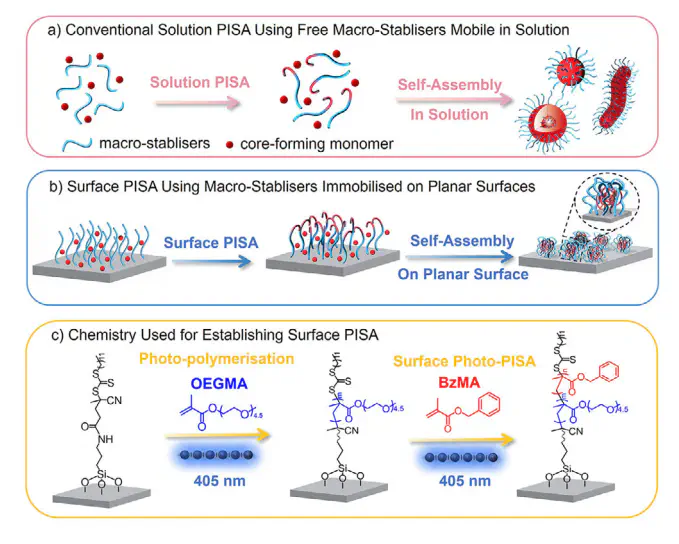Polymerisation‐Induced Self‐Assembly on Planar Surfaces:A New Approach for Controlling Surface Topography and Modulating Material‐Bio Interactions

摘要
Polymerisation-induced self-assembly (PISA) has emerged as a highly efficient method for synthesising polymeric nanoparticles with diverse and well-defined morphologies for a range of applications. While extensive research has focused on solution-based PISA mediated by conformationally free macro-stabilisers, the process of PISA on planar surfaces using surface-tethered macro-stabilisers with constrained mobility, namely surface PISA, remains largely unexplored. Investigating this process is significant to further advance PISA technology and expand its applications. In this work, we explore surface PISA through both experimental and computational approaches, revealing key differences from conventional solution-based PISA. We also demonstrate that surface PISA offers an innovative approach for controlling surface topography and modulating material-bio interactions. Specifically, we showcase its versatile application in creating slippery liquid-infused porous surfaces (SLIPS) and encapsulating antibiotics, endowing material surfaces with enhanced antifouling and antimicrobial properties. We believe this work is a significant step forward for PISA technology and will create new opportunities for its broader applications.